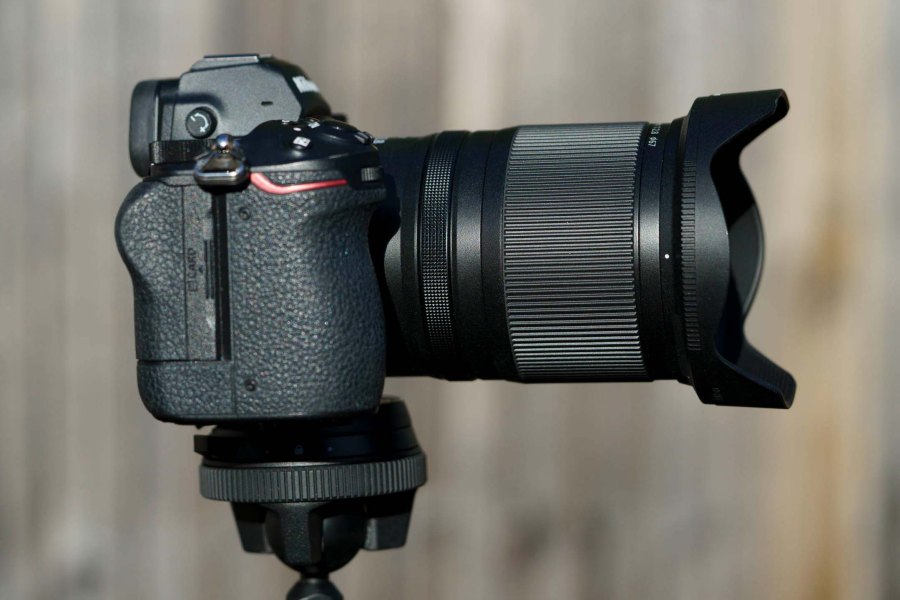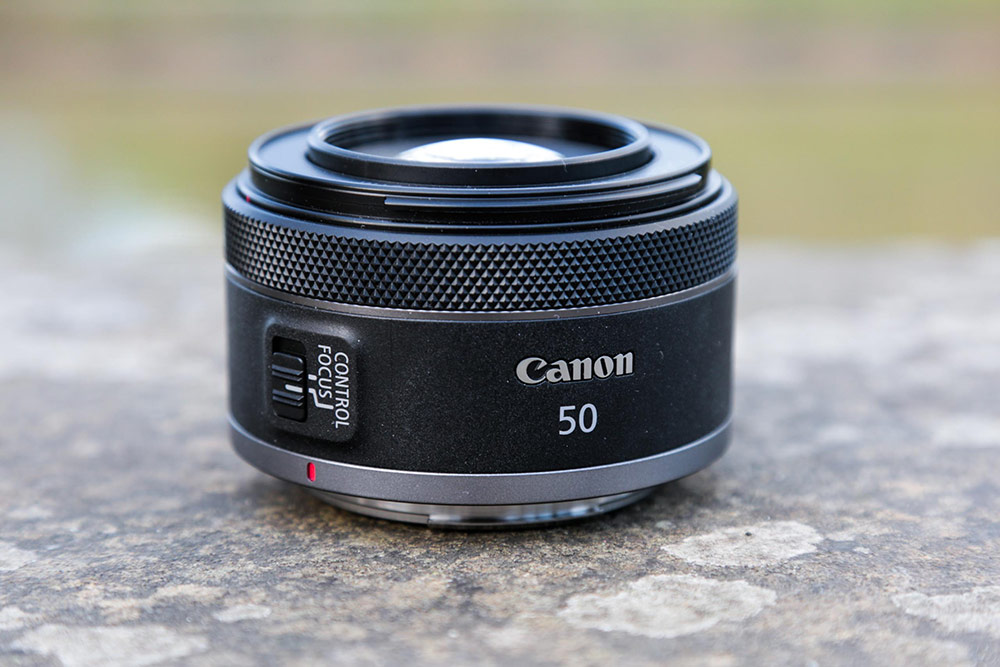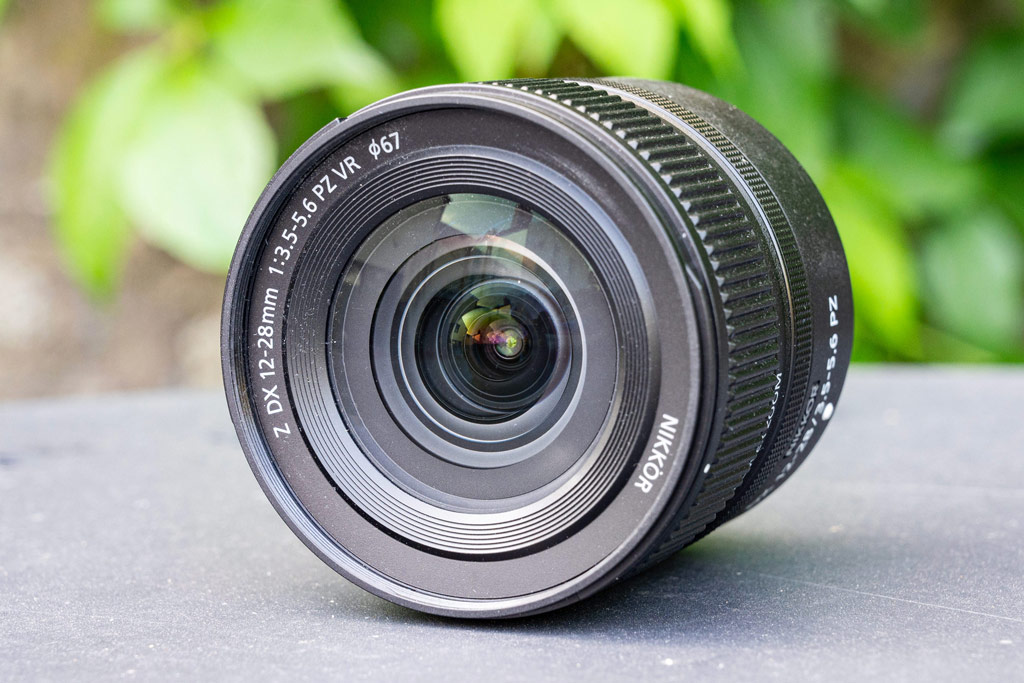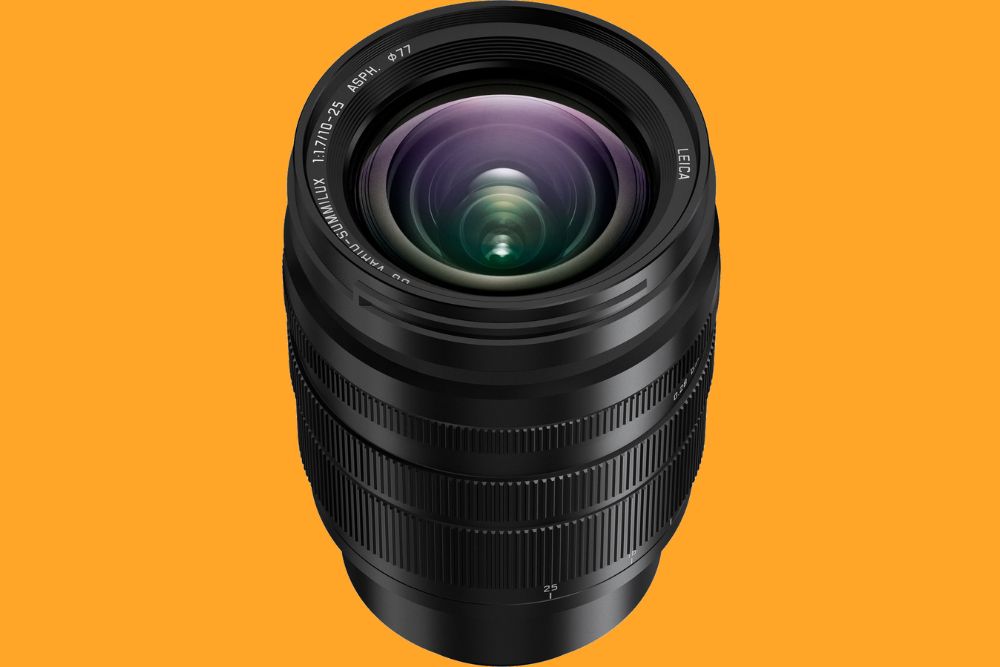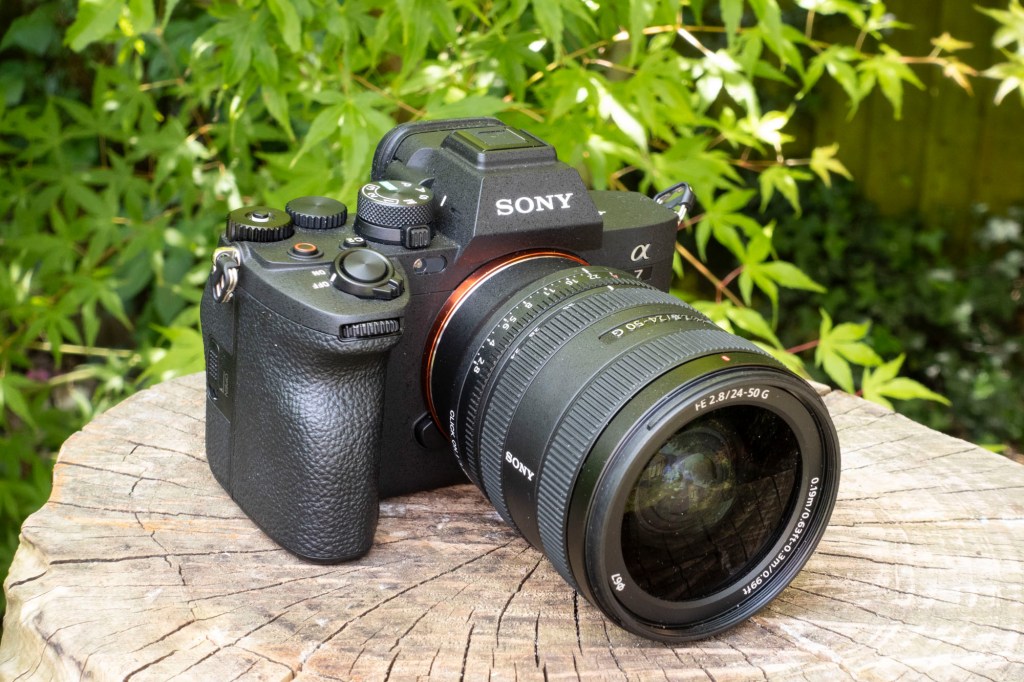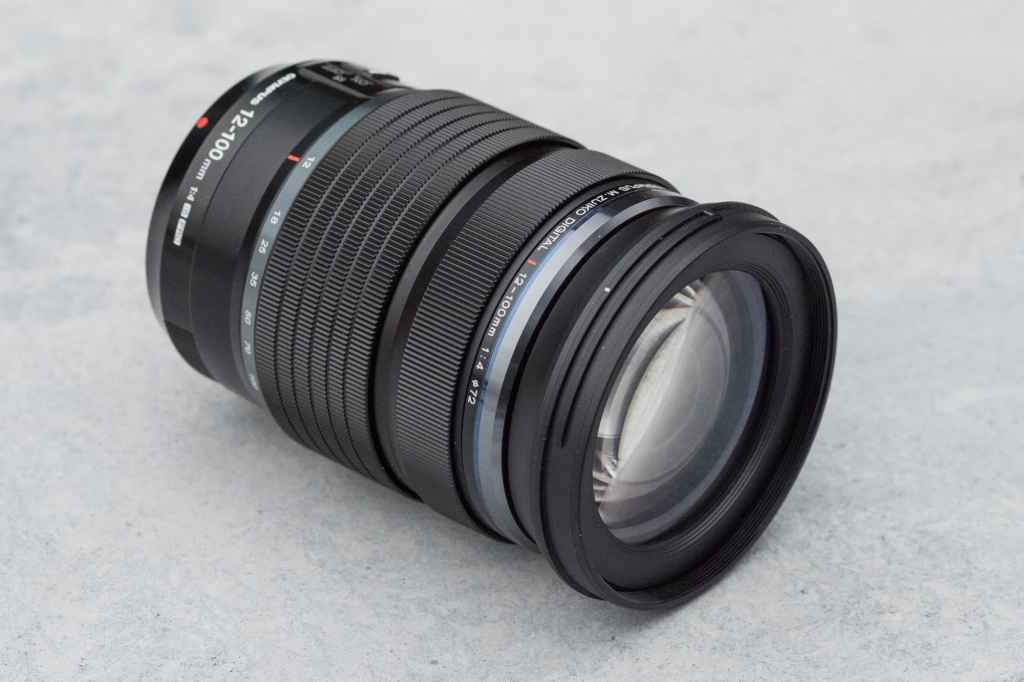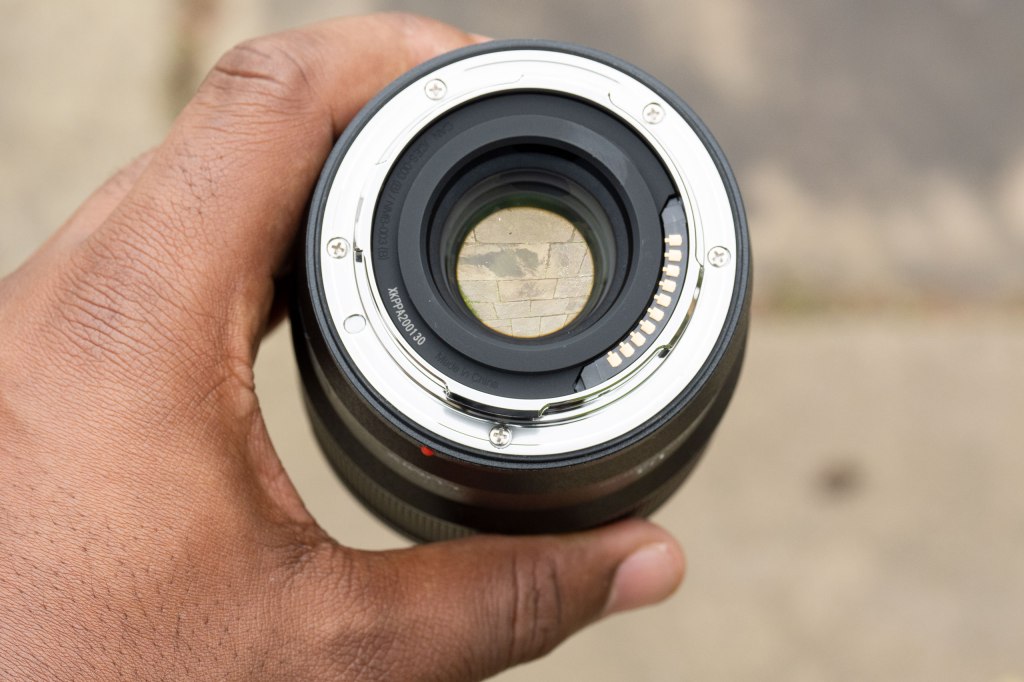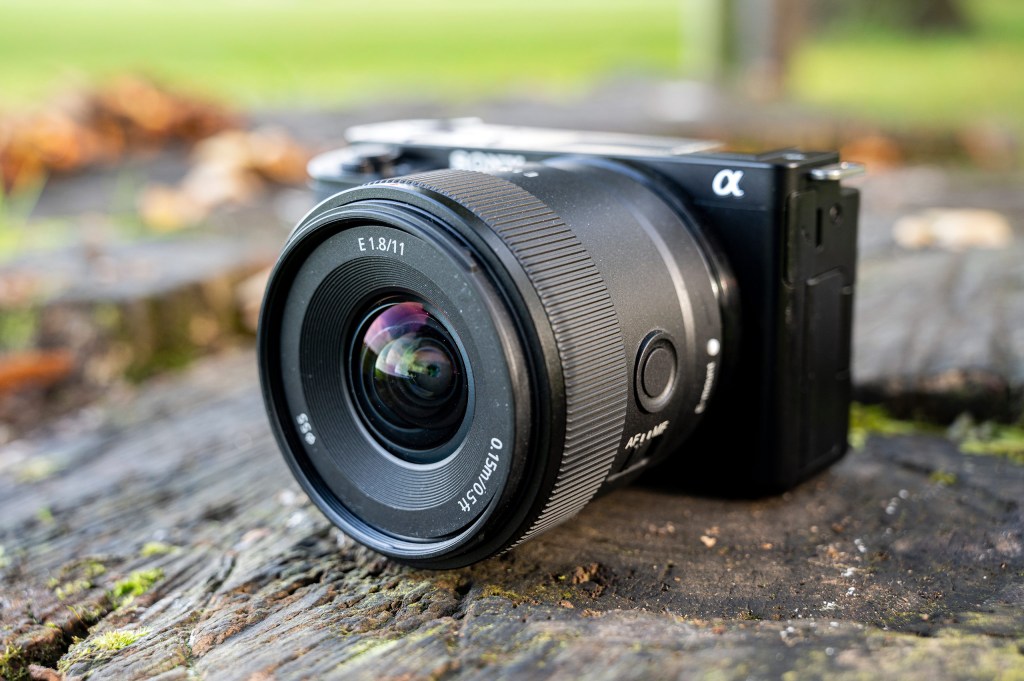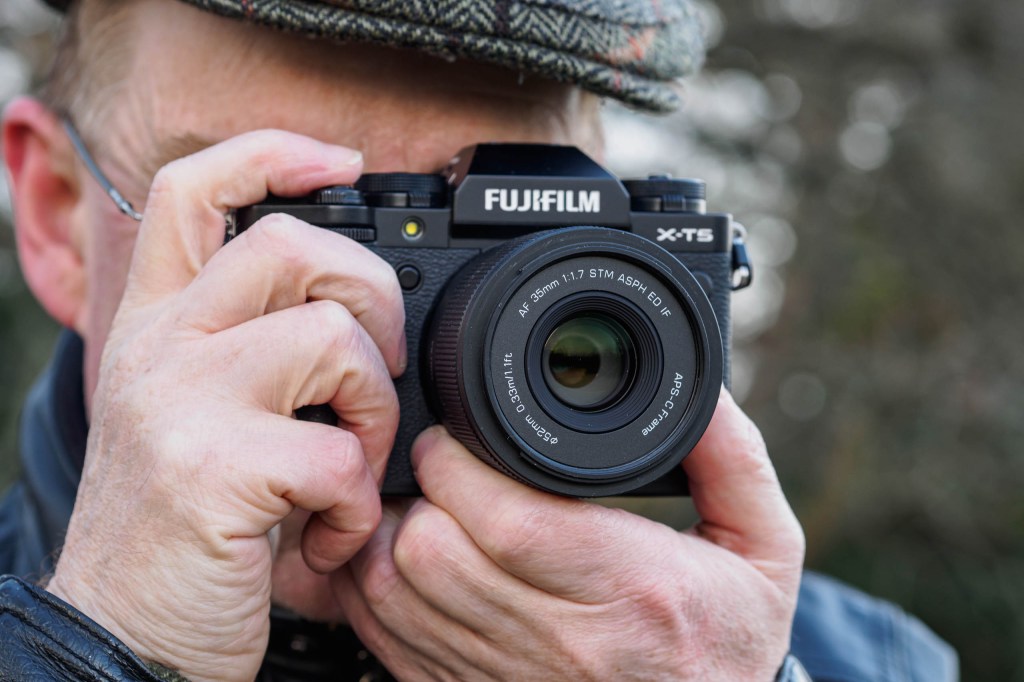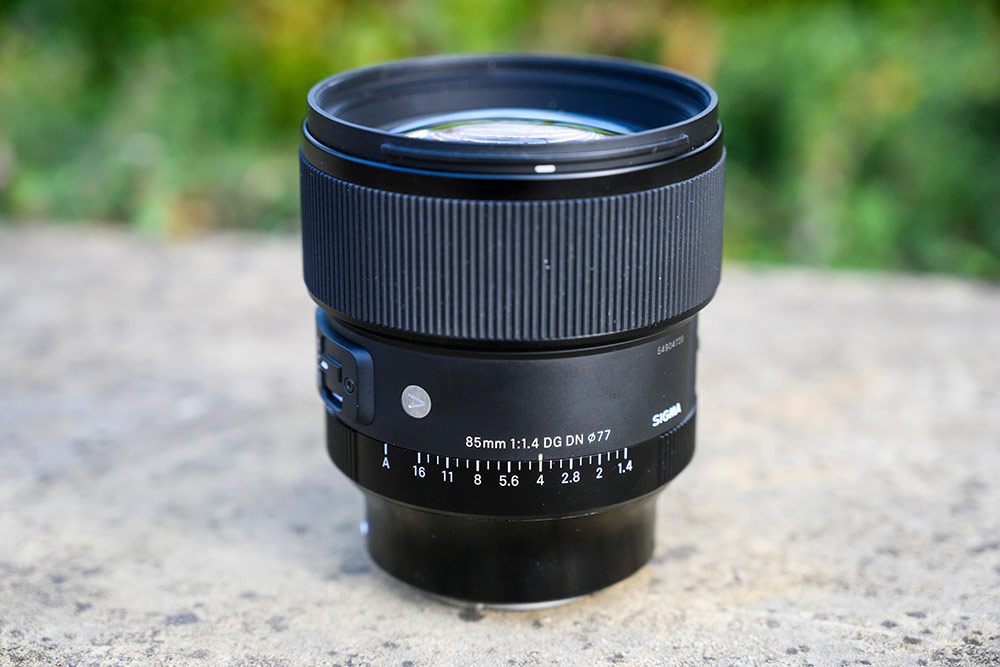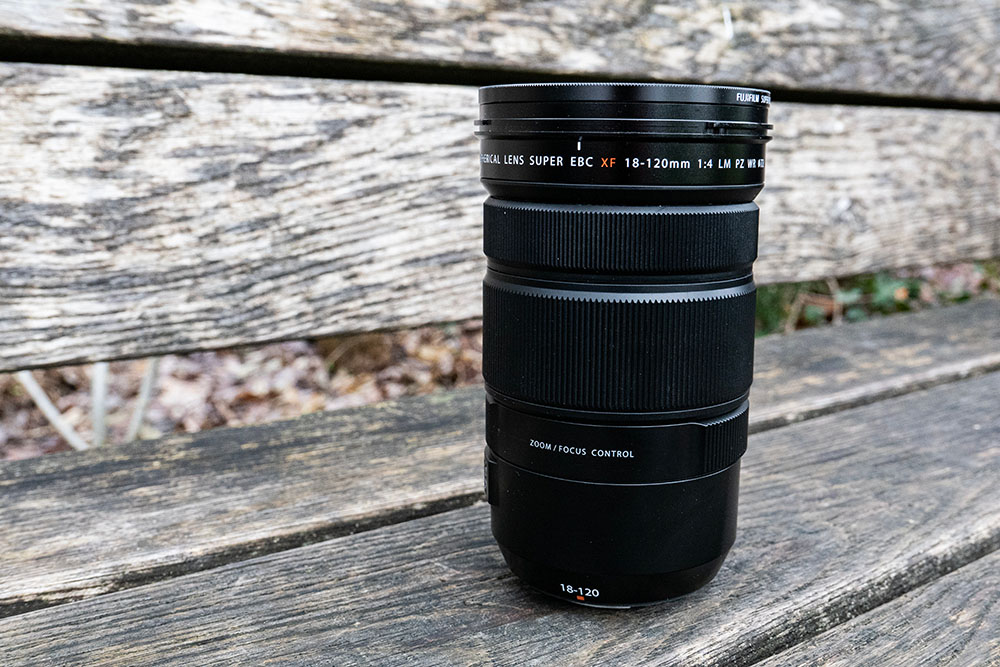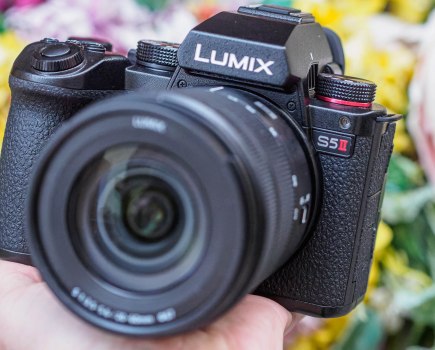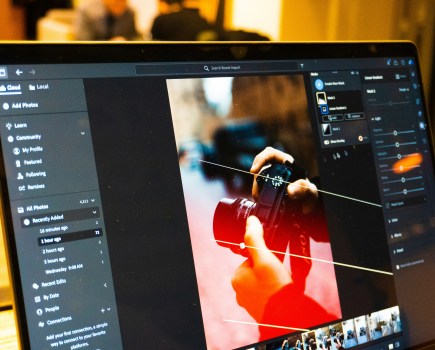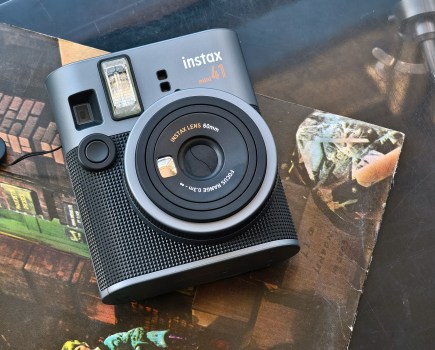Looking for the best lenses for video? We’ve got you covered with this guide to the best lenses we’ve reviewed across all the major mounts, including Canon, Sony, Nikon, Fujifilm, Micro Four Thirds and more. We’ve focused this list on the budget-friendly end of the scale, to try and help as many shooters as possible find their perfect video lens.
We make a point of looking at video capability as well as photographic whenever we review a lens or a camera, and each of these lenses has been assessed for its video-centric features. You can scroll to the bottom of this page for more detail on our criteria for selecting the lenses for this guide.
Our list includes options for all the major mounts, so whatever kind of setup you have, there should be a great video lens here for you. If you’re still building your video setup, check out our guide to the best cameras for video and vlogging. We also have a practical guide to how to shoot video for YouTube with your camera, and for making your sound as good as it can be, check out our run-down of the best-value audio accessories for video.
The best lenses for video: our quick list
Looking for the best deal on lenses for video? Not only will you find the best lenses for video, but you’ll also find some of the best deals as our ‘Buy now’ buttons are set to automatically take you to the best prices, from trusted retailers, plus you’ll also find a list of other retailers below each lens, so you can find the right deal for you.
Here’s a quick glance at the best video lenses featured in this article, with links to the best current prices:
- Canon RF-mount: Canon RF 50mm F1.8 STM – Buy now
- Nikon Z-mount: Nikkor Z 17-28mm f/2.8 – Buy now
- Sony FE-mount: Sony FE 24-105mm F4 G OSS – Buy now
- Nikon Z-mount (DX): Nikkor Z DX 12-28mm f/3.5-5.6 PZ VR – Buy now
- Micro Four Thirds: Panasonic 10-25mm f1.7 Leica DG Vario-Summilux ASPH Lens – Buy now
- Sony FE-mount: Sony FE 24-50mm F2.8 G – Buy now
- Micro Four Thirds: Olympus M.Zuiko Digital ED 12-100mm f/4 IS Pro – Buy now
- L-mount: Panasonic Lumix S 18mm F1.8 – Buy now
- Sony E-mount: Sony E 11mm F1.8 – Buy now
- Fujifilm X-mount: Fujinon XF 10-24mm F4 R OIS WR – Buy now
- Multiple mounts: Viltrox AF 35mm F1.7 – Buy now
- Sony FE, L-mount: Sigma 85mm F1.4 DG DN Art – Buy now
- Fujifilm X-mount: Fujinon XF 18-120mm F4 LM PZ WR – Buy now
Why you can trust Amateur Photographer…
We spend many hours testing every product we recommend, in detail, in a variety of situations and shooting scenarios, and only use experts for our reviews, so you can be sure that you’re getting the best products. Find out more about our expert writers.
Canon RF 50mm F1.8 STM
Amateur Photographer verdict
We like this lens for its versatility; its wide aperture enables striking images and scope for fast shutter speeds in low light. Compact, lightweight, and affordable- Tremendous value for money
- Knurled focus ring offers secure grip
- Super compact
- No AF/MF switch
- Focusing isn’t completely silent
At a glance:
- Mount: Canon RF
- Focal length: 50mm
- Lens construction: six elements in five groups
- Max aperture: f/1.8
- Closest focusing distance: 30cm
- Price: $199 / £199
Canon’s ‘nifty fifty’ lenses have been highly acclaimed for years by photographers using the brand’s DSLRs to shoot stills and video, but with Canon’s introducing a full-frame mirrorless range with cameras like the EOS R6 and EOS RP, a new version was needed. The result is the RF 50mm f/1.8 STM – a lens that balances price, size and a fast maximum aperture beautifully to produce a must-own optic for Canon video shooters.
Measuring 69.2×40.5mm and tipping the scales at only 160g, this lens will balance nicely with cameras like the EOS R6 when paired with a gimbal like the Ronin-SC. The 50mm will give a natural perspective close to that of the human eye and the lens features Canon’s STM motor technology for fast autofocus that will be quiet and won’t pick up on your audio track.
The RF 50mm enables videographers to capture frame-filling footage of smaller subjects thanks to a closest focusing distance of 30cm and features Canon’s Super Spectra Coating to enhance quality. The 50mm lens is also great for talking head video.
Read our Canon RF 50mm F1.8 STM Review
Nikkor Z 17-28mm f/2.8
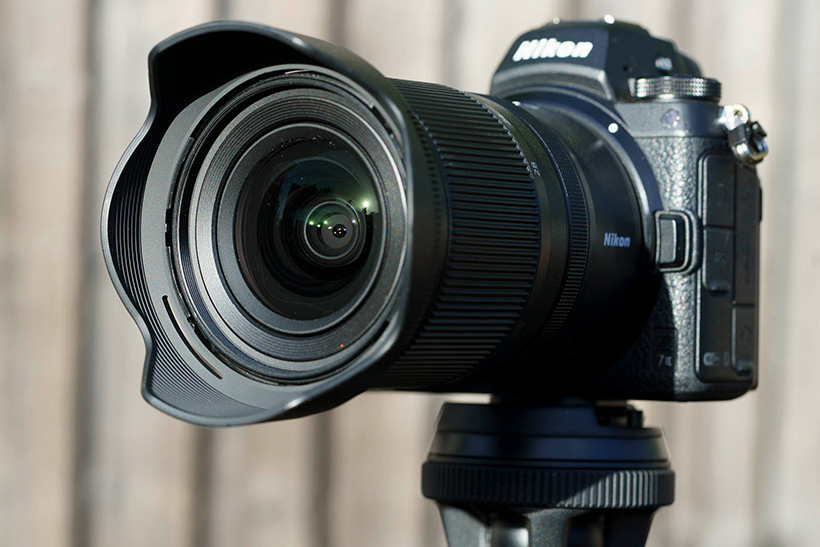
Amateur Photographer verdict
A full-frame wide-angle zoom for Nikon Z-mount that controls the usual flaws of wide-angle optics extremely well. A superb lens with good overall sharpness however it lack IBIS.- Good price and balance for an f/2.8 lens
- Image quality excellent throughout zoom
- No built-in stabilisation
- Paucity of on-body physical controls
At a glance:
- Mount: Nikon Z
- Focal length: 17-28mm
- Lens construction: 13 elements in 11 groups
- Max aperture: f/2.8
- Closest focusing distance: 19-26cm
- Price: $1,197 / £1,129
The Nikon Z system now includes plenty of cameras with impressive video spec, from the mighty Nikon Z9 and its 8K 30p recording capabilities, to the affordable and vlogger-friendly Nikon Z30. There’s no shortage of excellent Z-mount lenses to choose from when it comes to crafting a video setup, but we’ve opted for the well-balanced Nikkor Z 17-28mm f/2.8. More affordable than you’d expect a zoom with a constant f/2.8 aperture to be, the lens is weather-sealed with a robust construction. There aren’t many on-body controls to speak of, though the focus ring can be assigned to control a preferred function when autofocus is engaged.
While the Z 17-28mm doesn’t have Nikon’s premium S-Line designation, we found it to be a very respectable performer nonetheless. Sharpness is consistent throughout the aperture range as well as the whole of the zoom. Focusing is very quick and practically silent. Flare is controlled-for very nicely too, so you shouldn’t have too many problems shooting into the light. It’s a lens that mostly just works, and keeps out of the user’s way.
The only real issue that might give some video shooters pause is the lack of built-in image stabilisation. If you’re using a full-frame Nikon Z camera, this won’t be a problem as you’ll have the camera’s built-in IBIS. The APS-C models, including the vlogger-focused Z30, lack stabilisation, meaning you’ll likely need to invest in a gimbal.
Read our Nikon Nikkor Z 17-28mm f/2.8 review.
Sony FE 24-105mm F4 G OSS
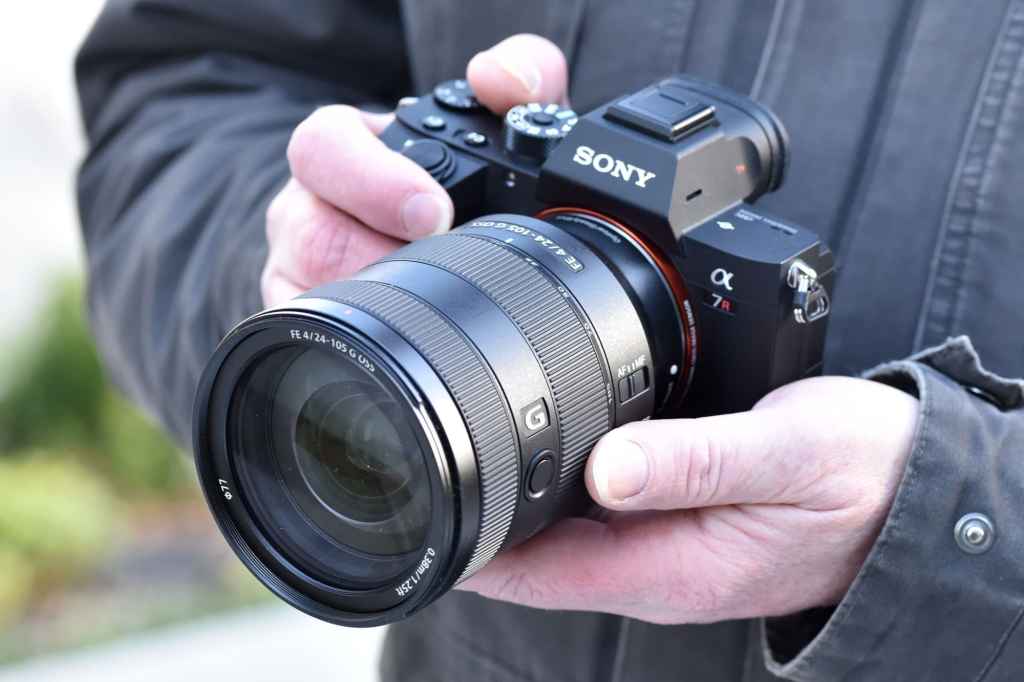
Amateur Photographer verdict
Impressively sharp, not too bulky, weather-resistant and with a really useful zoom range, it ticks all the right boxes.- Exceptional quality throughout zoom range
- Optical stabilisation
- Lightweight build
- Silent AF
- Zoom ring is a little small
At a glance:
- Mount: Sony FE
- Focal length: 24-105mm
- Lens construction: 17 elements in 14 groups
- Max aperture: f/4
- Closest focusing distance: 38cm
- Price: $1,098 / £929
This stalwart, do-everything zoom for full-frame Sony cameras has been around since 2017, and it’s still an excellent choice for Sony shooters looking to capture video. The broad, flexible zoom range running all the way from a wide 24mm to a telephoto 105mm means you’re covered for the vast majority of shooting situations you’re likely to encounter, while the constant f/4 aperture means you’re never forced to stop down when zooming in. It’s also impressively lightweight, at 663g, is much more affordable than professional zooms, and has optical stabilisation.
All very well, but how does it perform? Well, we first published our review of this lens in 2017, and have revisited it a few times since then – and we’ve always come away impressed. Optically, this lens is still an absolute stunner, delivering excellent sharpness all the way through its zoom range, from corner to corner. The kind of compromise you normally have to put up with when picking a 24-105mm instead of, say, a 24-70mm just isn’t evident here, and it’s very hard to imagine a Sony user who wouldn’t be happy with the performance of this lens.
The autofocus is fast, reliable and – crucially – silent, so you won’t have your video’s sound compromised by whirring motors. Switch to manual focus and you’ll also find an excellent experience, with a smoothly rotating focus-by-wire ring. Both this and the zoom ring rotate smoothly and have rubberised coverings that grip well. One thing worth being aware of for video users is that the zoom ring is on the small side, which can make it a bit trickier to pull off smooth zoom transitions while recording. This isn’t a ruinous issue – and practice definitely makes perfect. It’s just something to be aware of.
Proof, if proof were needed, that great design has real staying power, this seven-year-old zoom lens represents fantastic value for Sony FE-mount users. For an all-in-one lens to capture great video content in a range of situations, it’s hard to think of a better option than this.
Read our full Sony FE 24-105mm F4 G OSS review.
Nikon Nikkor Z DX 12-28mm f/3.5-5.6 PZ VR
Amateur Photographer verdict
A well performing lens in a light and compact body, which doesn’t set you back too much either. It’s the widest angle lens you can currently get for DX format too- Optimal feature-set for vlogging
- Built-in stabilisation
- Power zoom and silent autofocus
- No on-body control buttons
At a glance:
- Mount: Nikon Z (DX)
- Focal length: 18-42mm (equivalent)
- Lens construction: 12 elements in 11 groups
- Max aperture: f/3.5-5.6
- Closest focusing distance: 19cm
- Price: $357 / £379
If you’re using one of Nikon’s APS-C mirrorless cameras for video, like in particular the vlogger-friendly Nikon Z30, then it’s a good idea to get hold of some of the few DX-format lenses the firm has available. This is because they are more affordable than their full-frame counterparts, and designed with the smaller sensor format in mind. The Nikkor Z DX 12-28mm f/3.5-5.6 PZ VR is touted specifically as the vlogging lens for DX-format Z-mount cameras, and as such, should be a priority to pick up if you’re shooting video on a Z30, Z50 or a Z fc.
In testing, we appreciated the lightweight design of this lens, which makes it excellent for run-and-gun vlogging. The power zoom design means it stays balanced when zooming in and out – useful when the lens is mounted on a gimbal. We found the focusing to be consistently fast, only starting to struggle when light levels got seriously low, and quiet enough not to produce any noise that will be caught on video, realistically. The focus transitions while recording video are pleasingly smooth, and the built-in stabilisation is effective. This is a lens that’s clearly been designed to try and make vlogging as easy as possible, and succeeds pretty well.
Read our Nikon Nikkor Z DX 12-28mm f/3.5-5.6 PZ VR lens review.
Panasonic Leica DG Vario-Summilux 10-25mm F1.7 ASPH.
Amateur Photographer verdict
A lens with impressive f/1.7 aperture, and exceptional sharpness throughout the zoom range.- Optimised for video
- Weather sealing
- Fixed f/1.7 aperture
- On the pricey side
- Extends while zooming
At a glance:
- Mount: Micro Four Thirds
- Focal length: 20-50mm (equivalent)
- Lens construction: 17 elements in 12 groups
- Max aperture: f/1.7
- Closest focusing distance: 15cm (AF), 12cm (MF)
- Price: $1,798 / £1,799
An enduringly popular Micro Four Thirds lens, the Panasonic Leica DG Vario-Summilux 10-25mm F1.7 ASPH covers a useful equivalent focal range of 20-50mm equivalent. With a constant aperture of f/1.7, it’s a highly capable lens in low light, and Panasonic has also stuffed it with plenty of features to appeal specifically to video shooters.
These include a mechanism to minimise focus breathing – changes in focal length that occur when an object is brought sharply into focus. It also has stepless aperture control, and a micro-step drive system in the aperture control that keeps exposure adjustments smooth when the brightness of a scene changes. Focusing is silent, too, thanks to the inner focus drive system.
Even though it’s on the pricey side, this has proved a favourite lens among Micro Four Thirds vloggers. So much so that Panasonic later introduced something of a spiritual successor, the Panasonic Leica DG Vario-Summilux 25-50mm f/1.7, for those who want a tighter focal length.
Sony FE 24-50mm F2.8 G
Amateur Photographer verdict
While the focal range of this standard zoom may seem limited at first glance, it’s actually pretty perfect for video work, making this lens a cost-effective choice for video shooters.- Covers the bases for video
- Lightweight and travel-friendly
- Focuses quickly
- No stabilisation
- Significant distortion when uncorrected
At a glance:
- Mount: Sony FE
- Focal length: 24-50mm
- Lens construction: 16 elements in 13 groups
- Max aperture: f/2.8
- Closest focusing distance: 19-30cm
- Price: $1,098 / £1,149
One of the major advantages of Sony’s E-mount lens ranges, compared to other full-frame systems, is that it’s simply been going a lot longer. This means that the basics of the kinds of lenses most users are looking for have long been covered, and more niche options have started to appear. Case in point, this standard zoom lens for full-frame and APS-C cameras, which covers a fairly narrow zoom range of 24-50mm (or 36-70mm on APS-C). Photographers might not be too impressed by such a limited range, but for video shooters, it’s pretty perfect.
As such, the lens has been well-optimised for video. Its aperture ring offers a clickless mode that enables smooth exposure transitions; the barrel has an AF/MF switch for fast swapping between focusing modes; and the autofocusing system performs brilliantly for video, as we discovered in our testing. Switch on Sony’s famous Face Detection mode and the system will keep track of faces in the frame uncannily well – useful for keeping track of your key subjects. The Focus Breathing Correction prevents zoom creep when changing the focal distance; it incurs a minimal crop, but nothing anyone’s going to be bothered by
Optical performance is predictably excellent. The lens is somewhat reliant on corrections for curvilinear distortion and barrel distortion, but these corrections work well and you’re never realistically going to have any reason to turn them off. The constant f/2.8 aperture also allows you to open up wide to create shallow depth of field. Overall, this travel-friendly lens is an ideal companion for Sony-using video shooters.
Read our review of the Sony FE 24-50mm F2.8 G
Olympus M.Zuiko Digital ED 12-100mm f/4 IS Pro
Amateur Photographer verdict
A superzoom lens with unparalleled combination of high image quality, compositional versatility, robust construction and near-magical image stabilisation.- Excellent sharpness throughout zoom range
- Very effective optical stabilisation
- Well constructed but not too heavy
- Expensive for a superzoom (but worth it in our opinion)
- Stabilisation needs to be paired with specific cameras for full efficacy
At a glance:
- Mount: Micro Four Thirds
- Focal length: 24-200mm (equivalent)
- Lens construction: 17 elements in 11 groups
- Max aperture: f/4
- Closest focusing distance: 15cm
- Price: $1,399 / £1,199
This superzoom for Micro Four Thirds cameras has a claim to being one of the best lenses of its type ever made. Over the generous equivalent focal range of 24-200mm, it maintains sharpness impressively well, making it genuinely useful right the way through that range. If you’re a run-and-gun vlogger or filmmaker who wants to be able to shoot at different perspectives without constantly swapping lenses, the Olympus M.Zuiko Digital ED 12-100mm f/4 IS Pro is something of a godsend. Plus, at a little over 500g, it’s not so prohibitively heavy that you won’t be able to carry around for a day-long shoot (one of the benefits of Micro Four Thirds).
The optical stabilisation on this lens also merits particular praise – it’s amazingly effective, especially when paired with Olympus or OM System cameras that allow for Sync IS to further boost the system up to 7.5 stops of compensation. It makes the far end of the telephoto zoom much more useable hand-held than it would be otherwise, further strengthening this lens as a proposition for vloggers.
We gave this lens the full five stars in our review. It’s undeniably an expensive proposition for a superzoom, but it stands head and shoulders above similar lenses for other systems.
Read our Olympus M.Zuiko Digital ED 12-100mm f/4 IS Pro review.
Panasonic Lumix S 18mm F1.8
Amateur Photographer verdict
It’s a fantastic, versatile lens that manages to deliver handsomely on its primary use cases.- Compact and lightweight
- Excellent optical quality
- No lens breathing
- Some comatic aberrations at f/1.8
At a glance:
- Mount: L-mount
- Focal length: 18mm
- Lens construction: 13 elements in 12 groups
- Max aperture: f/1.8
- Closest focusing distance: 18cm
- Price: $898 / £799
Another wide-angle, fast-aperture prime, but this time it’s for the L-mount, and is engineered to work well with Panasonic’s Lumix S full-frame mirrorless cameras. The Panasonic Lumix S 18mm F1.8 is something of a unique prospect in the L-mount family. Similar alternatives exist, particularly from Sigma, but they tend to be much more expensive and considerably heavier, like the superb but weighty Sigma 20mm f/1.4 DG HSM | A.
With a focal length of 18mm and an aperture of f/1.8, the Lumix S lens is well-suited for general day-to-day vlogging. It delivers plenty of sharpness where you want it, and silky bokeh in the defocused areas of an image. It has also been designed with videographers in mind and there are plenty of clever, useful features to this effect. For instance, the lens includes a mechanism that suppresses focus breathing, meaning it can automatically rack focus smoothly, without appearing to zoom in or out.
It feels like a natural companion for the lighter members of the Lumix S family: the Lumix S5 or Lumix S5 II. But it’ll pair well with any member of the range, and deliver a fast and silent video-shooting experience.
Read our Panasonic Lumix S 18mm F1.8 review.
Sony E 11mm F1.8
Amateur Photographer verdict
A wide, lightweight prime that pairs well with Sony’s APS-C cameras, the 11mm F1.8 is an inexpensive video lens worth adding to the kit bag.- Nice and lightweight
- AF-hold button and AF/MF switch
- Bright aperture
- No stabilisation
At a glance:
- Mount: Sony E (APS-C)
- Focal length: 11mm (equivalent: 16.5mm)
- Lens construction: 12 elements in 11 groups
- Max aperture: f/1.8
- Closest focusing distance: 15cm (12cm in manual focus)
- Price: $499 / £499
Sony’s APS-C mirrorless range offers plenty to tempt video shooters, including dedicated vlogging cameras like the ZV-E10 II. A good lens to pair with these cameras is the Sony E 11mm F1.8 prime, a fairly straightforward lens that’s lightweight, reliable and delivers one of the widest angles of view you can get on the Sony APS-C system.
It’s clearly marketed towards vloggers. We tested it out with the original ZV-E10 and found it balanced well, weighing just 181g. It’s plastic, but the mount is metal and it feels reasonably robust. Having a physical AF/MF switch is a nice touch, and the manual focusing ring is pleasant to use, with smooth movement. Autofocus, meanwhile, is swift and near-silent – just what you want.
We found sharpness levels to be consistently very good – best as usual when you stop down. Opening the lens up wide to take advantage of the F1.8 aperture also results in very attractive imagery, with lovely round bokeh. There’s a little vignetting, but not enough to be a serious worry. This is a dependable, affordable little lens that’s a much better choice than a kit zoom for vlogging on Sony’s mirrorless APS-C range.
Read our full Sony E 11mm F1.8 review
Fujinon XF 10-24mm F4 R OIS WR
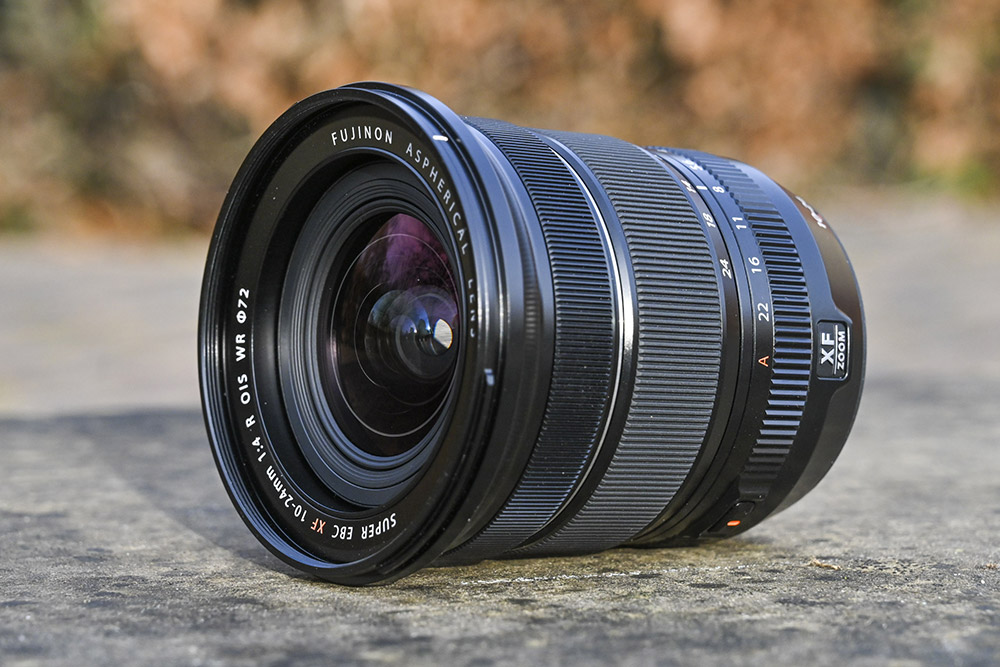
Amateur Photographer verdict
A durable weather-resisitant wide-angle lens that focuses swiftly and silently, while built in image stabilisation helps capturing better hand held footage.- Hardy, moisture-resistant build
- Effective optical stabilisation
- Lightweight
- Some low-frequency clicking of diaphragm blades (under certain conditions)
- On the pricier side
At a glance:
- Mounts: Fujifilm X
- Focal length: 10-24mm
- Lens construction: 14 elements in 10 groups
- Max aperture: f/4
- Closest focusing distance: 24cm
- Price: $999 / £869
Fujifilm users who want to shoot video have a narrower lens selection than those who use other brands. However, the XF 10-24mm F4 R OIS WR is a lens that comes recommended by Fujifilm as one of the best X-mount lenses for video, and it considerably impressed us in our review. It’s durable and weather-resistant, which is useful for on-location shoots, and its sharpness impresses throughout the zoom range.
The manual focusing experience – an important consideration for video – is first-rate on the XF 10-24mm F4 R OIS WR. The ring is finely grooved, with a fluid feel, and you can take precise manual focus control by rolling your thumb over it at any time.
A lightweight lens, the XF 10-24mm F4 R OIS WR provides an equivalent focal length of 15-36mm when mounted to one of the X-series APS-C mirrorless cameras. It’s a highly credible all-purpose lens for video, and any Fujifilm user with an inclination towards video should think about giving it some space in their kit bag.
Read our Fujinon XF 10-24mm F4 R OIS WR review
Viltrox AF 35mm F1.7
Amateur Photographer verdict
Cheap, cheerful and available for multiple mounts, the Viltrox AF 35mm F1.7 is a solid, no-frills budget video lens for APS-C systems.- Quiet, accurate autofocus
- Solid optical quality
- Lightweight and small
- No aperture ring
- No optical stabilisation
At a glance:
- Mounts: Nikon Z, Sony E, Fujifilm X
- Focal length: 35mm (53mm equivalent)
- Lens construction: 11 elements in 9 groups
- Max aperture: F/1.7
- Closest focusing distance: 35cm
- Price: $179 / £179
Third-party lenses are always a great source of value for money – if you can live without the brand name, you can often pick up a much cheaper optic than you would get from your camera manufacturer, and still get something of quality. The Viltrox AF 35mm F1.7 is such a lens, available for multiple APS-C mirrorless mounts – Fujifilm X, Sony E and Nikon Z (no Canon RF version yet, sadly). At a price of less than £200 or $200, it’s a bargain of a lens, delivering snappy autofocus and solid image quality. If you’re a video shooter using one of these systems, it’s definitely one to consider, especially given its all-purpose equivalent focal length of 53mm.
In testing, we found the Viltrox lens performed consistently well across the board. The autofocus isn’t just fast, it’s also very quiet, which is great news for video, and the manual focus kicks in nicely when you need it. We tested the Fujifilm version, and found that it synergised very nicely with all the focusing aids that Fujifilm cameras offer.
There’s a little detectable focus breathing – not really enough to worry about, but enough to be worth keeping an eye on. As it’s cheap lens, there are inevitable compromises – no weather sealing, no built-in stabilisation. But for the price we could hardly expect such luxuries, and this is still definitely a lens to consider for blogging on a budget.
Sigma 85mm F1.4 DG DN Art
Amateur Photographer verdict
Famous for its exceptional optical quality and pleasing bokeh, this lens also features fantastic lens-based aperture control- Sophisticated optical path
- De-clicked aperture ring
- Bright maximum aperture
- Fixed focal length will limit real-world video use
- No focus distance marks on the barrel
At a glance:
- Mounts: L-mount, Sony FE
- Focal length: 85mm
- Lens construction: 15 elements in 11 groups
- Max aperture: f/1.4
- Closest focusing distance: 85cm
- Price: $1,099 / £979
The exceptional optical performance of Sigma’s Art series has been well-known for a while now, but what you may not be aware of is that the Art series shares a lot in common with the construction of Sigma’s Cine lenses, making them perfect for filming video without the additional price-tag.
The 85mm F1.4 DG DN Art gives videographers a lens that can capture tighter scenes and the maximum f/1.4 aperture will create an incredibly shallow depth-of-field that’ll bring a cinematic feel and a higher production value to your movies.
The 85mm f/1.4 Art lens packs in no less than five Special Low Dispersion (SLD) elements to deliver that optical quality but there’s far more to this lens than the glass because the lens also features a de-clicked aperture ring, enabling users to change aperture and balance exposure levels during a live take.
The AF system employs a stepping motor, which is optimised for both phase and contrast detection. Despite these pro features, the 85mm isn’t a lump and weighs in at 630g while offering a familiar filter thread of 77mm, which allows users to add ND filters to further control exposure levels.
Boasting dust and splash resistance, the 85mm f/1.4 Art also features an oil-repellent coating and the build features a mix of aluminium and TSC (Thermally Stable Composite) to keep the construction strong, yet light.
Read our Sigma 85mm F1.4 DG DN Art Review
Fujinon XF 18-120mm F4 LM PZ WR
Amateur Photographer verdict
With an f/4 fixed aperture throughout the focal range this is a highly versatile super-zoom lens. However the slightly noisy zooming might put some off- Very flexible zoom range
- Lightweight
- Weather-resistant
- Noisy operation
- Not the sharpest
At a glance:
- Mounts: Fujifilm X
- Focal length: 27-183mm (equivalent)
- Lens construction: 15 elements in 12 groups
- Max aperture: f/4
- Closest focusing distance: 60cm
- Price: $899 / £779
An impressively wide-ranging all-in-one zoom, the Fujinon XF 18-120mm F4 LM PZ WR is a great idea on paper, a one-size-fits-all lens to take everywhere. How does it measure up in the real world? Well, in our review we were overall quite impressed. The lens is not without its problems, but it does deliver something unique in the X-mount range and will suit vloggers and video shooters who want to be prepared for all eventualities.
Weighing under 500g, the XF 18-120mm lens slots into a kit bag without causing much fuss. The aforementioned zoom range is hugely useful; some video users might wish for a little more width at the short end, but it’s still a commendable achievement. One unfortunate thing to note for video use is that the zoom mechanism is quite noisy, as is the autofocus. In most cases, it won’t be an issue, but if you’re shooting somewhere with very little ambient noise, odds are it’ll be picked up.
This power zoom lens isn’t the sharpest, but it does a good job in the optimal settings – zoom in a little and stop down to around f/5.6.
Read our full Fujinon XF 18-120mm F4 LM PZ WR review
What makes a good lens for video?
A big, wide-focus ring
There’ll be times when you’re filling scenes with a shallow depth-of-field when you’ll want to take more control over the focusing system and switch to manual focus (MF).
In these scenarios, you want to have as much physical control over the lens as possible.
Thus the lenses to avoid are ones that have impossibly thin focus rings that are very unergonomic and hard to get precise control over.
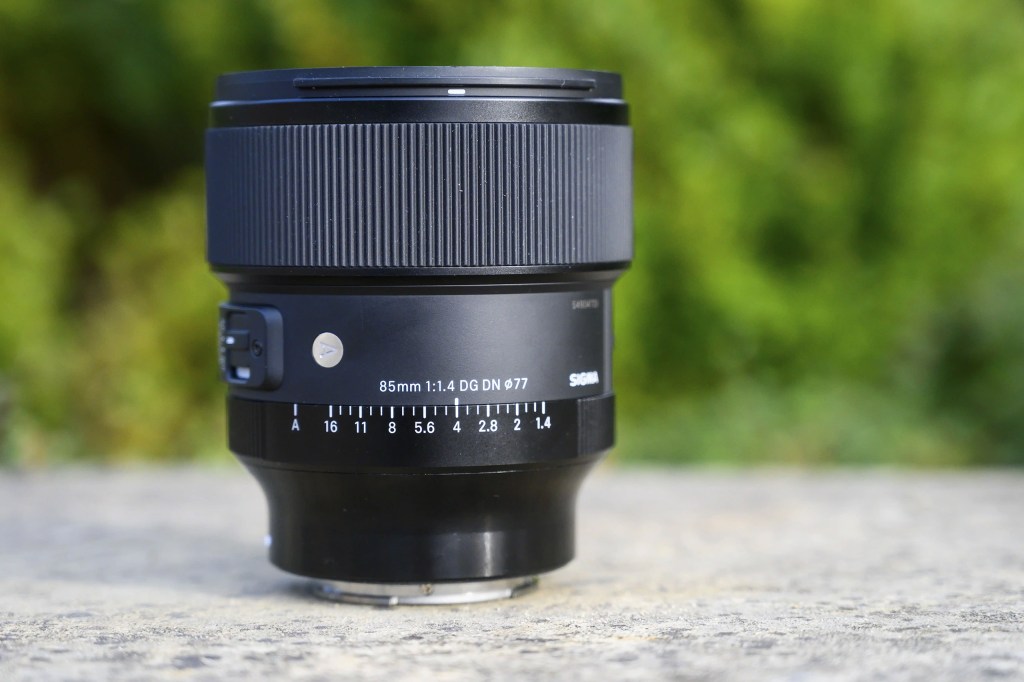
Instead, look out for optics with a big, wide focus ring that you can get a good grip of.
Better still, focus rings with a pronounced rubberised texture will further aid your hold and prevent your digits from slipping off the focus ring.
A de-clicked aperture ring
An aperture control ring enables users to change the aperture setting via the ring on the lens, rather than needing to fiddle about with the camera body’s dials or menus.
This is important because when you are capturing footage, you’ll be using a set shutter speed, such as 1/100sec.
So, in order to balance an exposure level, you’ll want to adjust the aperture instead (although you can also use ISO and ND filters to balance exposure too).
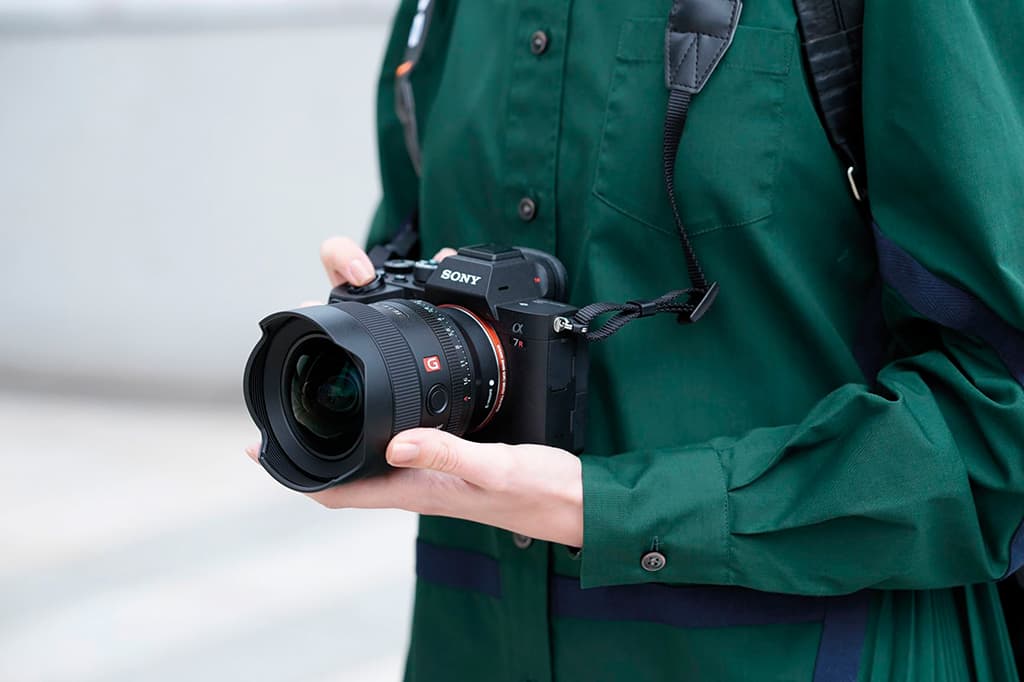
Some aperture rings are ‘clicked’, which means you feel a physical click or step as you turn the ring.
It’s more advantageous for a video-friendly lens to have a de-clicked aperture ring, that will turn freely without resistance, allowing you to balance the exposure more easily.
Stabilisation
Shaky footage is no good to anybody and while there are other options to stabilise footage – namely in-body image stabilisation (IBIS) within a camera body or the use of a gimbal so the videographer can move around while keeping the camera steady – using a lens with Image Stabilisation technology adds to your ability to keep things steady.

Most IS-enabled lenses offer the user the ability to switch the stabilisation off and on, giving the user even more control.
For the ultimate in stabilisation, pairing an IS lens with a camera body with IBIS will extend the compensation limits.
Lightweight dimensions
Big, heavy lenses are OK for video as long as you are happy to lock off the camera on a tripod, but this usually delivers static and uneventful, uninspiring footage.
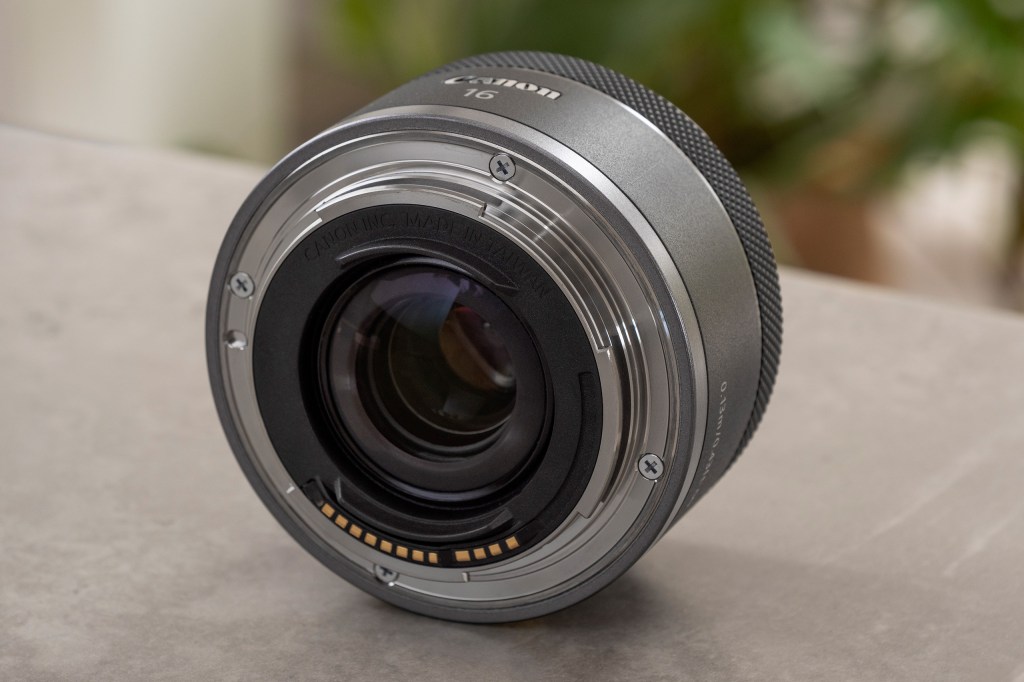
If you are going to capture motion by using the camera on a gimbal, or other device, then you want to reduce the load on the gimbal motors… this means using a lightweight and compact lens.
Pancake optics are ideal – for example, Sony’s 16mm f/2.8 not only measures just 62×22.5mm but also tips the scales at a mere 67g, making it a gimbal-friendly choice for videographers on a budget.
Advanced coating
When shooting video, you’ll more than likely want to shoot a lot of ‘contre-jour’ (literally shooting ‘against the day’) shots when you shoot into the light to capture backlit subjects.
These high-contrast lighting situations can flummox inferior lenses and produce huge amounts of flare and specular highlights.
When looking for a lens that you can use for stills and video, make sure it has a decent level of coating to protect against these issues.

A fast maximum aperture
For those beautiful, shallow-depth-of-field shots that add a heavy layer of cinematic style to your footage, you’ll need a lens that offers a fast maximum aperture.
Regular kit lenses often have a variable aperture so at best, you may be able to use f/3.5, but if you zoom in, you’re more likely to have a maximum aperture of f/5.6, which won’t give you the shallow depth-of-field you’re looking for.
Instead, look for lenses that have a maximum aperture of f/2.8 or faster.
A standard to mid-telephoto focal length
One common mistake many photographers make when moving into video for the first time is to select a lens that’s too wide.
Of course, there will be times when a wider angle view will suit the scene, but going too wide all the time can leave subjects in the frame looking too small and lost.
A standard or mid-telephoto focal length, such as 50mm, is a great place to start as this focal length is similar to the natural perspective of the human eye.
A fast motor
Picking a lens with the right motor system is crucial when selecting a video-friendly optic.
Sluggish motor systems will not only struggle to keep up with a moving subject in the frame, but they will also create ‘lens hum’, which can be picked up on your microphone and ruin your audio.
By contrast, a lens with a fast, modern motor system will be quiet, fast and accurate… thus leading to more usable footage.
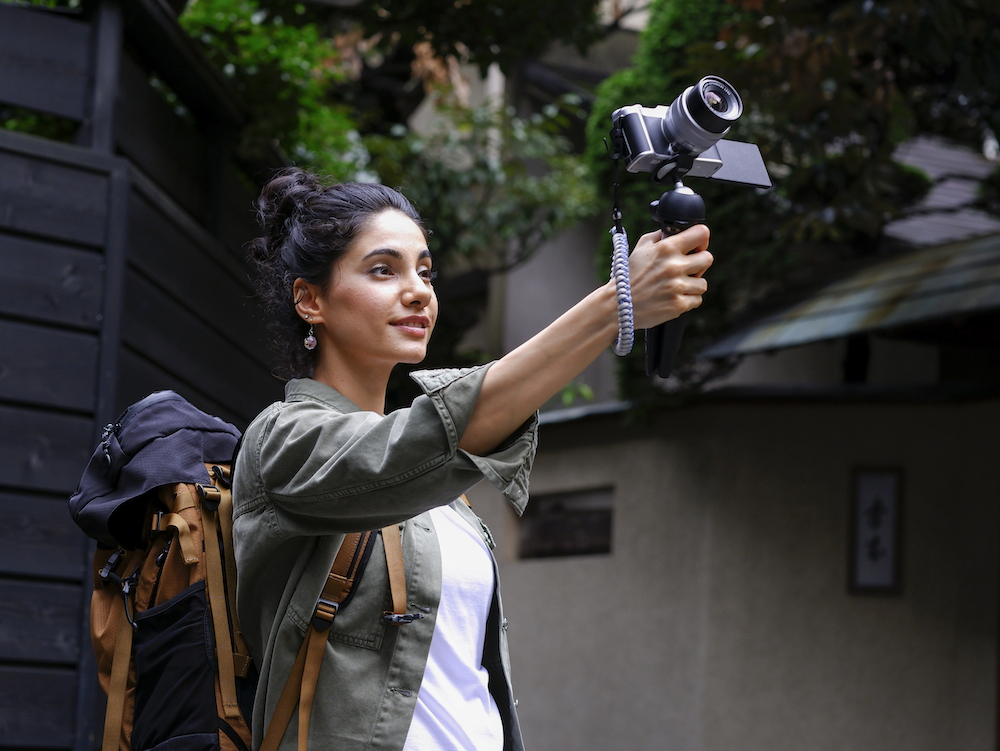
Familiar filter thread size
ND filters can prove useful when shooting videos as well as stills.
With your shutter speed locked in at 1/50sec or 1/100sec, it can be easy to overexpose a frame, particularly if you wish to employ a fast aperture like f/1.4 to create a shallow depth-of-field.
A video-friendly lens with a familiar filter thread size (such as 67mm, 72mm or 77mm) will mean you probably already have a ND filter (whether it be a screw-on or via a filter holder) that you can use to balance your exposure level.
Is 50mm a good lens for video?
Yes, it certainly can be! As you can see in this guide, we have included 50mm lenses. Providing a fairly naturalistic perspective, 50mm lenses offer a field of view roughly equivalent to that of the human eye. They also have the major advantage of being cheap to buy. Most of the major camera systems offer an affordable 50mm lens (or rough equivalent) in their stable, with a maximum aperture of around f/1.8 to help you produce shallow depth of field and make the most of available light.
A 50mm lens provides a narrower field of view than some vloggers prefer, with 35mm and 24mm lenses being commonly used to get plenty in the frame. Some also like using zoom for the versatility it offers. However, if you just need an affordable, capable lens that works, a 50mm is definitely a good choice.
How we test lenses
We test lenses by using them to take photographs and video in a wide range of real-world situations. We evaluate their balance, handling and physical controls, checking the usability of zoom rings and focus rings. We assess their autofocus across a range of different subjects and shooting scenarios and test out built-in stabilisation systems if present.
When specifically assessing the proficiency of a lens for video, we also look at factors like focus breathing, as well as whether the lens makes any audible noise while focusing that could compromise sound recording.
Text by Matty Graham, with contributions from Jon Stapley.
Further reading:
- How to record great quality videos with your camera
- Find the best cameras for video, vlogging and YouTube
- Best video editing software, including free tools
- Best external camera screens

